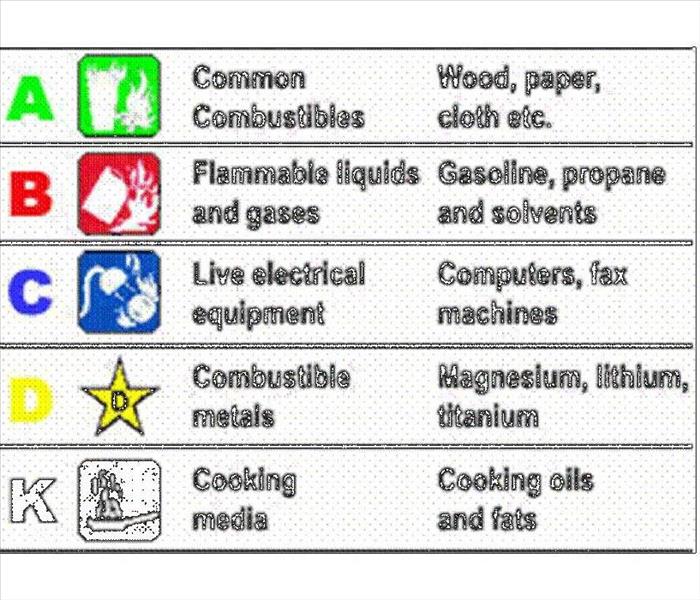Fire Extinguisher Safety
11/8/2018 (Permalink)
Do you know how to use a fire extinguisher?
Remember the phrase P.A.S.S.
- .. Pull the pin. This will also break the tamper seal.
- .. Aim low, pointing the extinguishernozzle (or its horn or hose) at the base of the fire.
- .. Squeeze the handle to release the extinguishingagent.
- .. Sweep from side to side at the base of the fire until it appears to be out.
Do you know what Class fire extinguisher you should have?
Class A: This is the most common extinguisher and can be used to put out fires in ordinary combustibles such as cloth, wood, rubber, paper and many plastics.
Class B: Used on fires involving flammable liquids, such as grease, gasoline and oil.
Class C: Designed for fires involving appliances, tools, or other equipment electrically energized or plugged in.
Class D: For use on flammable metals; often specific for the type of metal in question. These are typically found only in factories working with these metals.
Class K: Intended for use on fires that involve vegetable oils, animal oils, or fats in cooking appliances. These extinguishers are generally found in commercial kitchens, but are becoming more popular in the residential market for use in kitchens.






 24/7 Emergency Service
24/7 Emergency Service
